View basket (0 items $0.00)
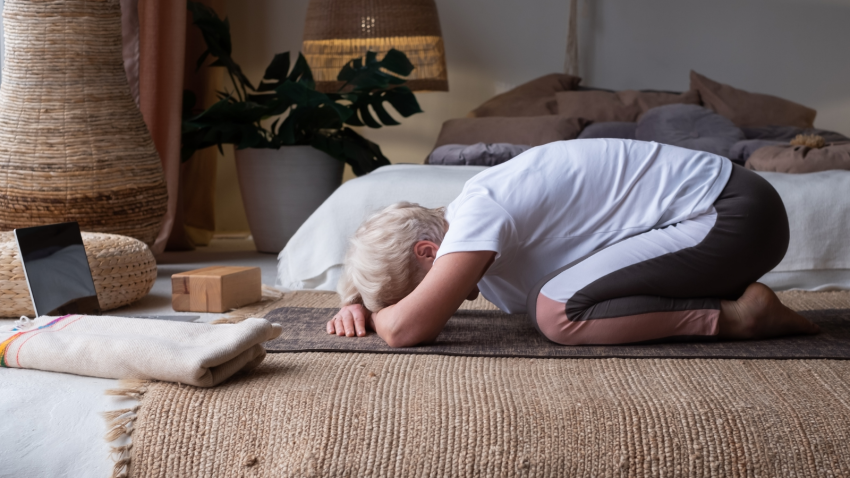
Gentle Yoga for Long COVID
Is someone close to you experiencing “long COVID”? Are you? You or that person might practice yoga for enhanced wellbeing, and have done so well before COVID arose. As a complementary treatment, might yoga for long COVID be beneficial?
Of all the scientific uncertainties that COVID has presented, “long COVID” might be the most puzzling. More than an intellectual curiosity, it’s a matter of public health and quality of life for many people. Those with the condition experience persistent respiratory and cardiovascular issues as well as symptoms that we might not connect with COVID itself: brain fog, impaired executive functioning, and worsened mental health.
COVID as a pandemic is ongoing for the time being. With more and more people getting infected over time, long COVID may very well become an increasingly significant public health issue. 
Yoga for long COVID can boost the health and functioning of the respiratory and cardiovascular systems, as well as how those systems interact with the nervous system. In addition, it can offer tools for managing stress, anxiety, and depression (or low mood, more generally). Yoga for long COVID can additionally be modified to be as gentle as long haulers may need, while still offering the myriad benefits that mindful physical activity can bring.
Thus, the practice could have something fruitful to offer when it comes to easing the day-to-day experience of people with long COVID. Let’s look at how through a short, gentle sequence of seated postures, breathwork, and mindfulness meditation.
Yoga will not be a magic cure-all for a condition as serious and as challenging as long COVID can be. But it might very well help strengthen and integrate the body’s systems and inner workings to the point that they have more of a fighting chance against this mysterious condition.
Yoga for Long COVID: A Seated Sequence
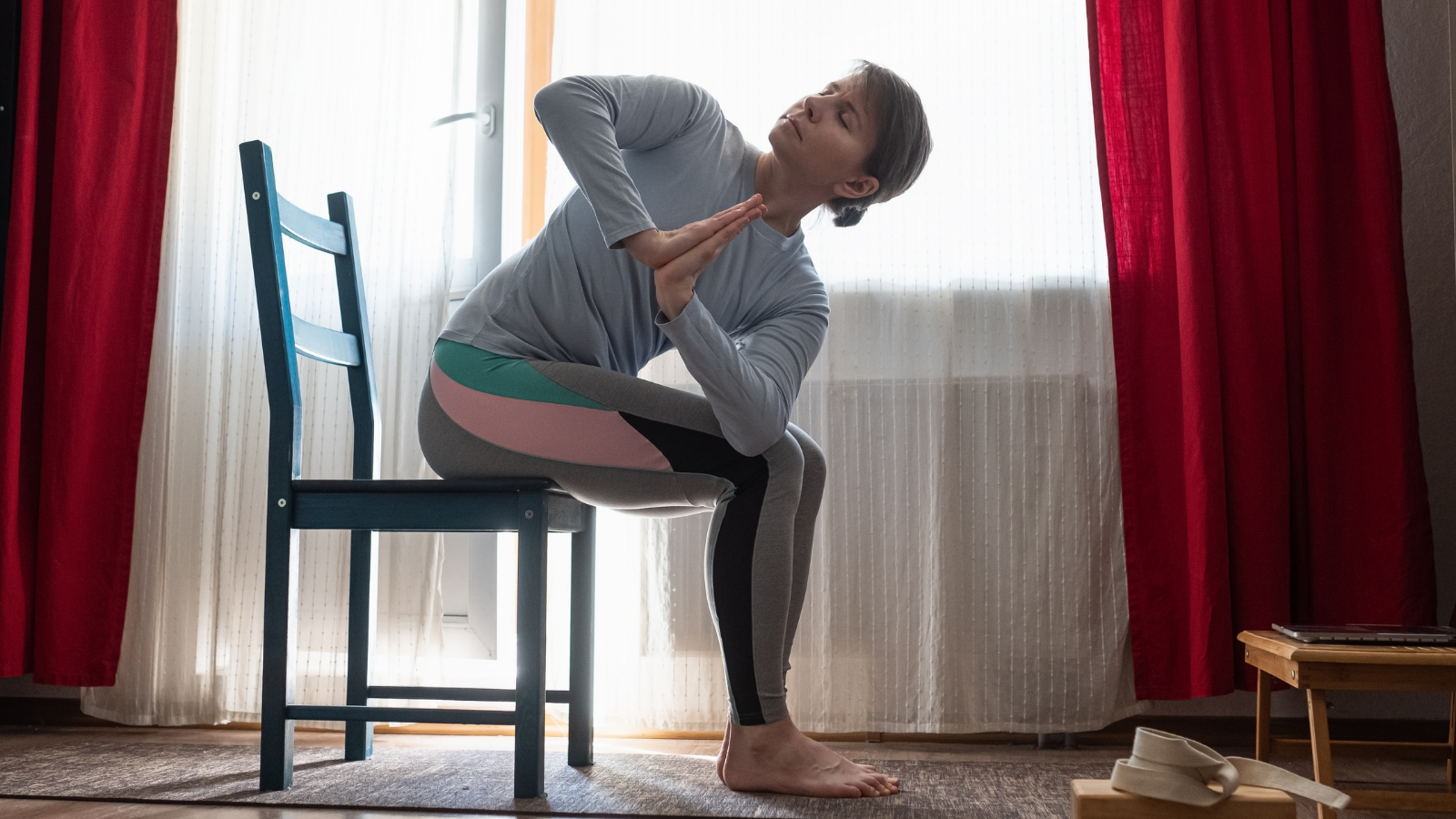 The following sequence is designed to be practiced seated, either on the floor or in a chair. If you’re seated on the floor, it’s best to sit on a blanket, block, or bolster. You can also use more common household items, such as a large, sturdy throw pillow. Be sure to switch the crossing of your legs halfway through the sequence. In other words, if your right leg is crossed in front, switch to place your left leg in front.
The following sequence is designed to be practiced seated, either on the floor or in a chair. If you’re seated on the floor, it’s best to sit on a blanket, block, or bolster. You can also use more common household items, such as a large, sturdy throw pillow. Be sure to switch the crossing of your legs halfway through the sequence. In other words, if your right leg is crossed in front, switch to place your left leg in front.
With staying seated in a chair, it’s helpful to shift so that you’re seated on the front half of the chair (closer to the seat’s edge than to the chair back). Also aim to keep your feet firmly planted under your knees at about the same distance apart as your hips.
Yoga for Long COVID: Respiratory Health
This exercise can help you tap into an awareness of the breath while gently strengthening the anatomical structures of our breathing. Aiming for its square quality also helps build toward smoothness and away from sometimes erratic, shallow breathing common in those with breathing issues. It also helps hone focus, which can begin to counteract the brain fog that some long COVID patients experience.
-
As you breathe in, feel a slight, gentle lift through your torso, as if you were a flower growing up toward the sun. At the same time, feel a stable grounding through your seat, roots growing down into the ground. Feel your spine’s natural curves.
-
Fix your gaze softly forward, or if it’s comfortable for you, close your eyes. Adjust your chin so that it’s parallel to the floor. Feel your shoulder blades draw down your back so that your collarbones broaden.
-
First, notice your breathing as it is right now. Notice what space you have available for breath.
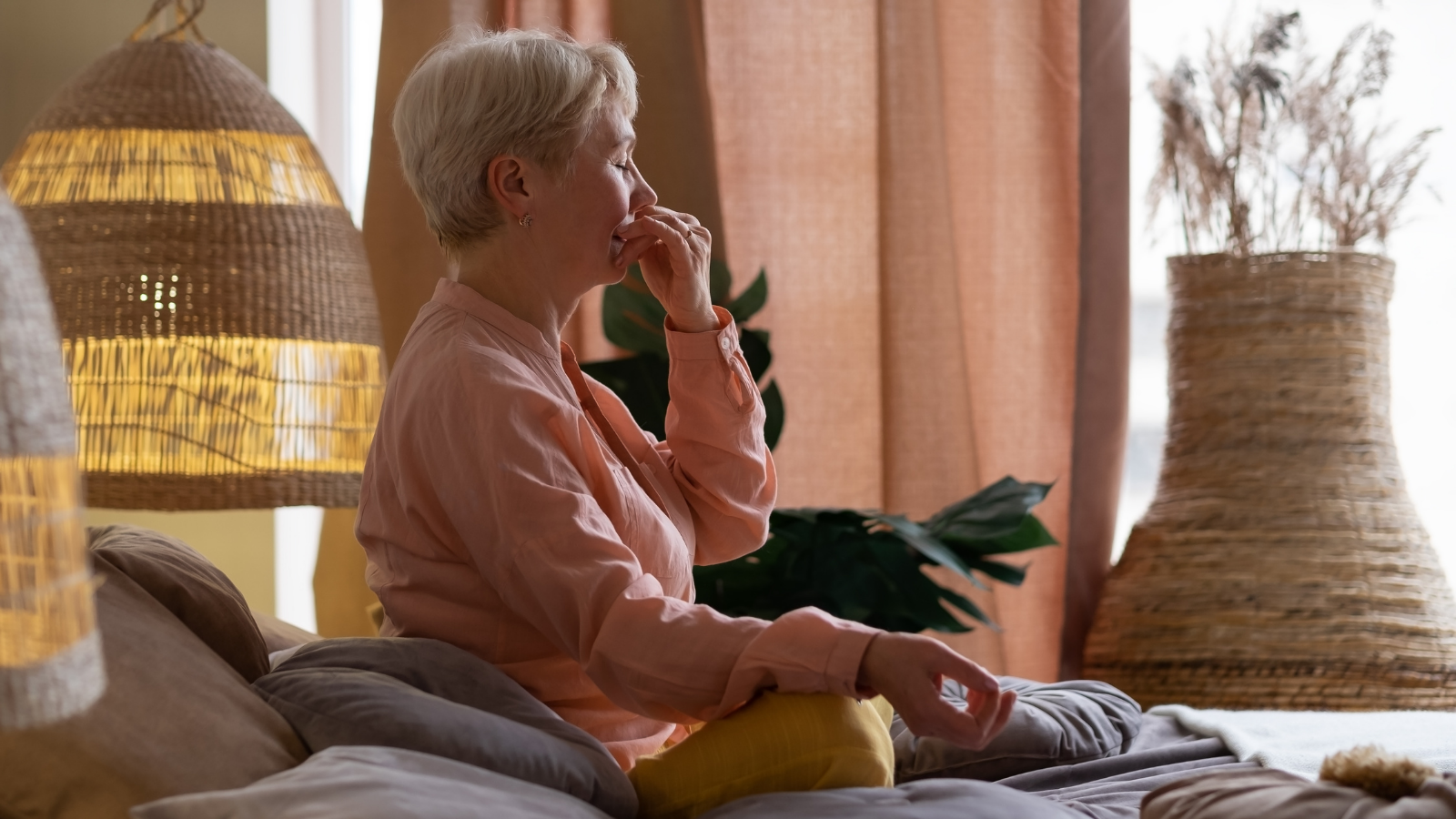
-
Your foundation set, breathe in for three counts. Feel the space from your belly button to your collarbones expand as you do so, as much as might be possible for you right now.
-
Breathe out for three counts, emptying fully out of breath. Notice and allow the subtle movements that happen as you breathe. But also maintain your sturdy foundation.
-
Continue with this pattern. If three counts feel like a lot for you right now, do two or even one. Never strain with breathwork, as it will take away from the sense of easeful stability that we’re looking for.
-
If it’s useful for you, visualize tracing a box with your breath. Your even inhalations and exhalations form even sides of a box shape. For example, each inhalation forms a side of a box and the exhalation forms the next side, and so on. Two full breaths make up a full box. If just listening to the even rhythm of your breath or feeling it in your body as you count resonates with you more, do that instead. We all learn and process in different ways.
-
After a minute or so of this breathing pattern, return to your normal breathing pattern. If you need to end earlier, because of the physical challenge or rising anxiety caused by focusing on breathing, of course, do so. Can you detect any differences between the quality of breath now and before you did Square Box Breathing?
Ease Yoga for Long COVID Symptoms
The physical challenges of long COVID can lead to reduced physical activity. That’s not helpful for healthy breathing. This flow can begin opening up the muscles and fascia of the torso, which aids breathing.
-
Take a few deep breaths before finding any movement. Imagine breathing in three dimensions, in all of the space between your pelvis and collarbones. Can you find a little more length through your torso as you breathe in? Can you maintain that length, but also release tension as you breathe out? Rather than judge, try to simply notice.
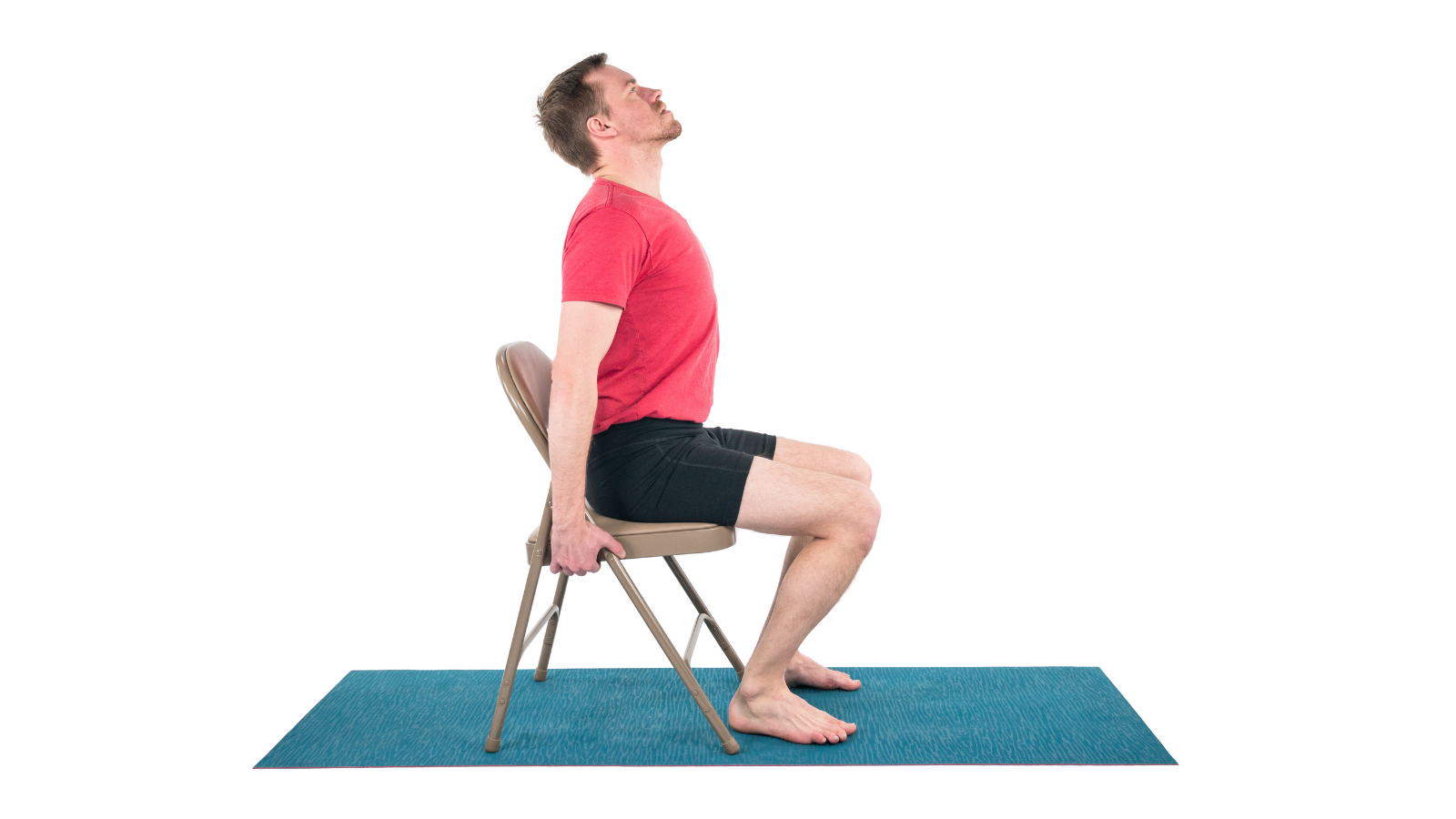
-
On a breath in, shift your tailbone backward (away from your knees) to begin a curve through your spine. Lift your heart to the sky to find a mild backbend, Seated Cow Pose (Bitilasana). Rather than fling your head back, let it gently and naturally follow the movement in the rest of your spine. Move as slowly and gently as you need to.
-
As you breathe out, dip your tailbone toward your knees to curve your spine in the opposite direction. Continue to let your spine flow in its natural curvature. This is your Seated Cat Pose (Marjaryasana).
-
Repeat that flow 4 to 5 more times, coordinating breath and movement as feels most natural and nurturing for you. Take your time; it’s not a race. This is your yoga for long COVID recovery.
-
Take three more conscious breaths before continuing with the sequence. Notice the resonance of breath and movement in your body. If anything feels sticky, tight, shallow, or shaky, again try to just notice rather than assign negative value.
Yoga for Long COVID: More Respiratory Help
These two poses help move the spine through its other possible directions (twisting and sidebending each way). This further opens up the torso fascia and musculature to aid breathing. Keeping your spine healthy and supple is helpful in yoga for long COVID. It helps us maintain mobility, even when we don’t have the energy for vigorous movement.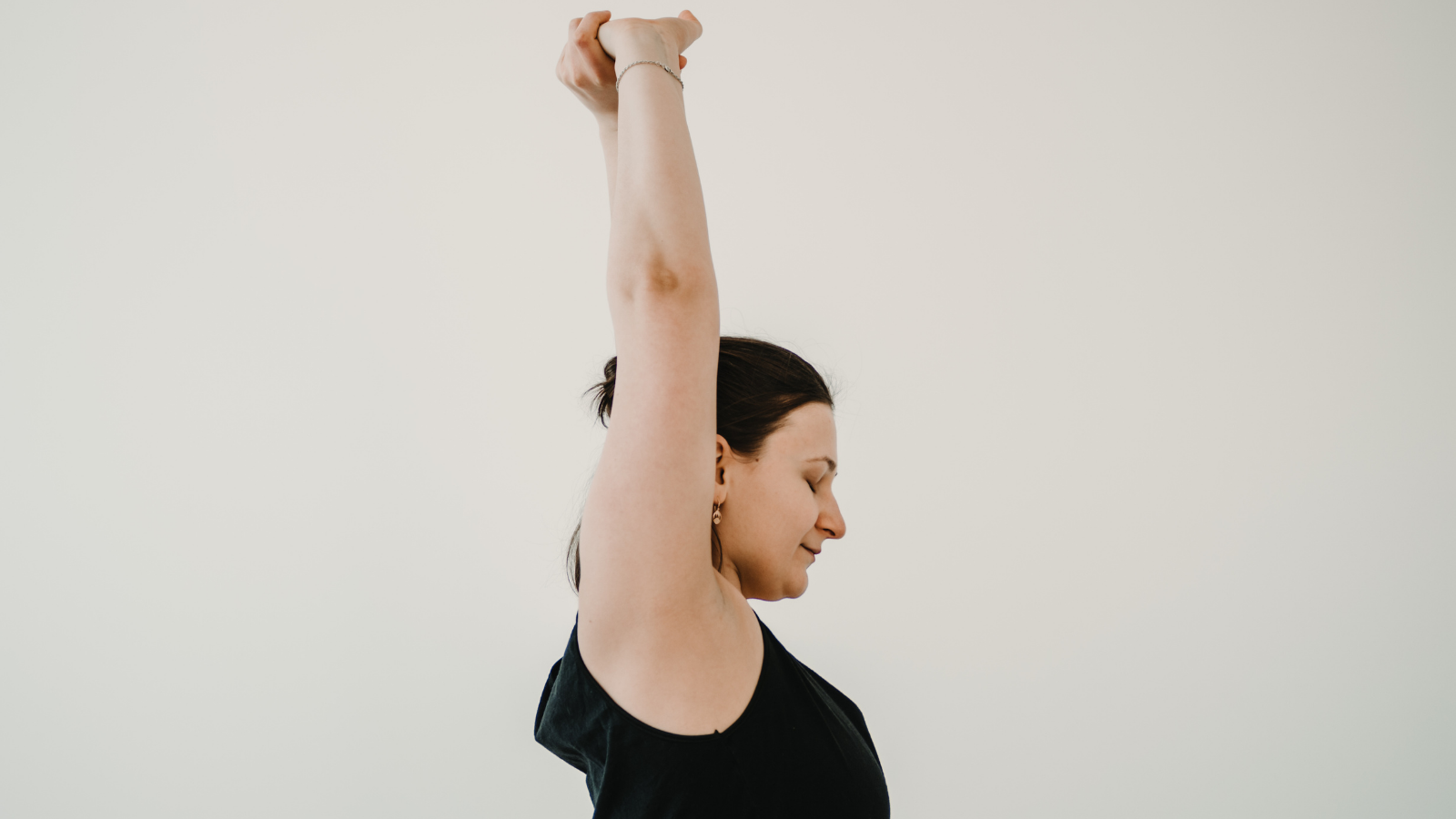
-
Interlace your fingers. Reach your arms up to the sky, either forward and up or to the side and up. Soften your front ribs down toward your pelvis as you do so. At the same time, try to keep your chest open and your collarbones broad. It’s a balance.
-
Breathe in and see if you can find a little more length through your spine. Breathe out and side bend toward your right.
-
Maintain the side bend for a few more breaths, prioritizing optimal length through both sides of your spine over achieving a “big” or “pretty” pose. Can you find a bit more space through your spine as you breathe in, and keep that length as you breathe out?
-
Raise your spine back up to fully vertical. Notice the space through your torso as you breathe in, and try to keep any openness that you may have found.
-
Twist toward your right as you breathe out, keeping the shape in your arms. Feel your abdominals initiating the twist.
-
Hold the twist for 3 to 5 breaths. Try to find just a bit more length and space through your spine as you breathe in, and just a bit more twist as you breathe out.
-
Repeat steps 1 to 6 to your left. If you need to release the interlace and shake out your hands or take a little break in between sides, of course, do so. These are yoga poses for better breathing. Again, if you need to take a break or take variations of your poses or breathing at any point, please do so.
Observing Your Breath: Mindfulness Meditation
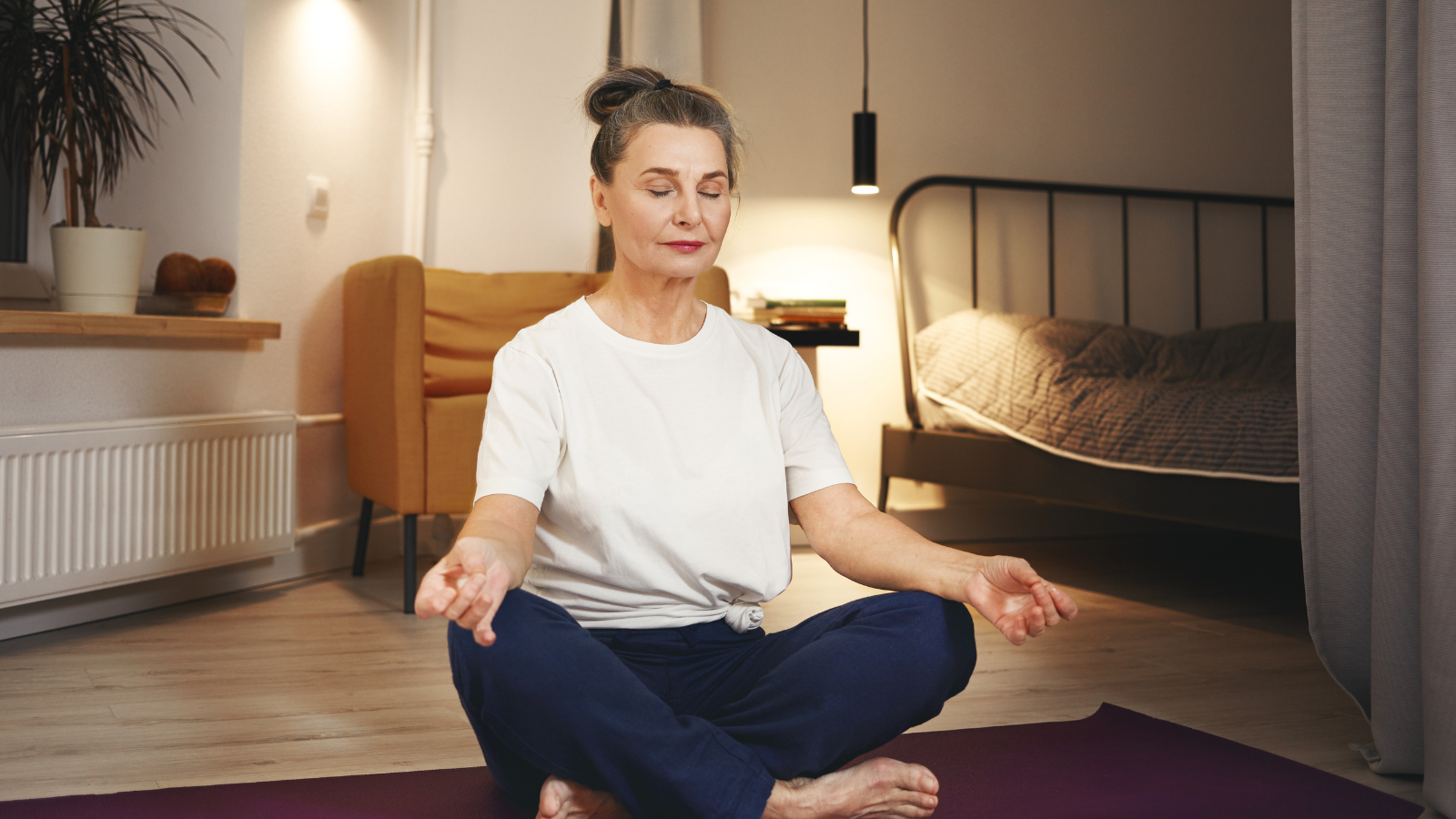 As you close out this sequence of yoga for long COVID, take a few deep, conscious breaths just to observe your breath.
As you close out this sequence of yoga for long COVID, take a few deep, conscious breaths just to observe your breath.
If you experience long COVID to the degree that breathing deeply is not an option, and/or focusing on your breath brings you anxiety, it may be better for you to practice another mindfulness exercise or meditation. Try a favorite mantra, a visualization, or anything else that can settle your mind and bring you a greater sense of inner calm.
Yet a big advantage of this exercise is that it can attune you more closely to your own breathing patterns and habits. Awareness is the first step to change. In this case, it can be a stepping stone for your own action toward healing. It can help you feel more informed and empowered, along with your healthcare providers, in your own care.
-
Set a timer for two minutes. You could even use your cellphone for this, as many phones have timers.
-
As you breathe in, say to yourself, “in.” Notice where the breath comes in and where it travels as you inhale. What is the sensation of breathing in like for you? What does it sound like? From your collarbones to your hips, what moves and what stays stagnant as you breathe in?
-
As you breathe out, say to yourself, “out.” Notice how your breath leaves your body. From your hips to your collarbones, what empties first? Are you able to empty all of the air out, or is that challenging for you? Do you feel some air remaining? What does breathing out feel like for you?
-
Repeat this until your timer goes off. If you need to end sooner, certainly do so, particularly if you are straining to breathe deeply. Conversely, if you find yourself wanting to do another minute or two, or even longer, of course, you can do that as well! This is your yoga for cardiovascular health. As you continue, you can also notice if the quality of your breath changes over the course of the exercise.
-
If you find that focusing on your breath is making you uneasy or even notably anxious, which can happen in cases of respiratory issues, taking longer breaths out than breaths in (for example, five counts to four counts or four counts to three counts) can help calm anxiety. Placing palms down on your thighs, versus facing your palms up, can also feel grounding.
-
When you’re ready, gently open your eyes and slowly rise from your seat. Notice if, as a result of your yoga for long COVID, you can shift into the rest of your day with easier breathing and less stress.
 Kathryn Boland is an RCYT and R-DMT (Registered Dance/Movement Therapist). She is originally from Rhode Island, attended The George Washington University (Washington, DC) for an undergraduate degree in Dance (where she first encountered yoga), and Lesley University for an MA in Clinical Mental Health Counseling, Expressive Therapies: Dance/Movement Therapy. She has taught yoga to diverse populations in varied locations. As a dancer, she has always loved to keep moving and flowing in practicing more active Vinyasa-style forms. Her interests have recently evolved to include Yin and therapeutic yoga, and aligning those forms with Laban Movement Analysis to serve the needs of various groups (such as Alzheimer’s Disease patients, children diagnosed with ADHD, PTSD-afflicted veterans - all of which are demographically expanding). She believes in finding the opportunity within every adversity, and doing all that she can to help others live with a bit more breath and flow!
Kathryn Boland is an RCYT and R-DMT (Registered Dance/Movement Therapist). She is originally from Rhode Island, attended The George Washington University (Washington, DC) for an undergraduate degree in Dance (where she first encountered yoga), and Lesley University for an MA in Clinical Mental Health Counseling, Expressive Therapies: Dance/Movement Therapy. She has taught yoga to diverse populations in varied locations. As a dancer, she has always loved to keep moving and flowing in practicing more active Vinyasa-style forms. Her interests have recently evolved to include Yin and therapeutic yoga, and aligning those forms with Laban Movement Analysis to serve the needs of various groups (such as Alzheimer’s Disease patients, children diagnosed with ADHD, PTSD-afflicted veterans - all of which are demographically expanding). She believes in finding the opportunity within every adversity, and doing all that she can to help others live with a bit more breath and flow!
Resources and notes
-
https://www.sciencedirect.com/science/article/pii/S0039606021008540 (Yoga helps to lower cortisol, and thereby stress, along with other non-medical interventions, e.g. art, canine, and nature therapy.)
-
https://pubmed.ncbi.nlm.nih.gov/34082792/ (This study looks at Ayurveda and yoga interventions, those with acute respiratory issues (ARDS) not included. The study is in the process; recruitment took place in early- to mid-2021.)
-
https://pubmed.ncbi.nlm.nih.gov/27115477/ (Study on yoga as an adjunctive asthma treatment. They looked over studies, some including just yogic breathing and some including also poses and meditation. “We found moderate-quality evidence that yoga probably leads to small improvements in quality of life and symptoms in people with asthma.” More rigorous research needs to be done for any empirical certainty.)
-
https://www.sciencedirect.com/science/article/abs/pii/S1744388121000050 (findings: “Yoga has been found to reduce the severity of dyspnea (labored breathing) and fatigue and improve sleep quality in chronic respiratory diseases.”)
Featured Courses









